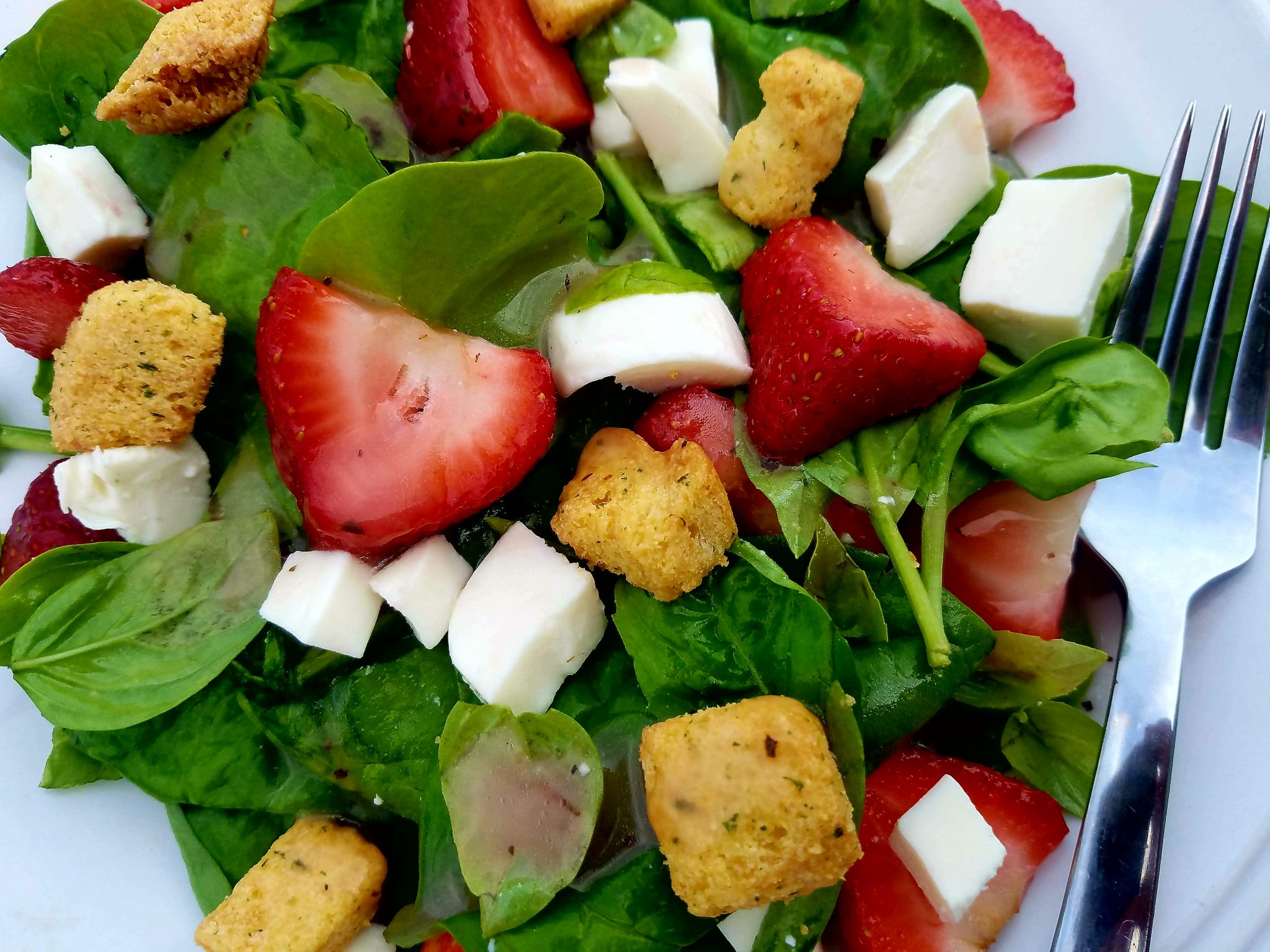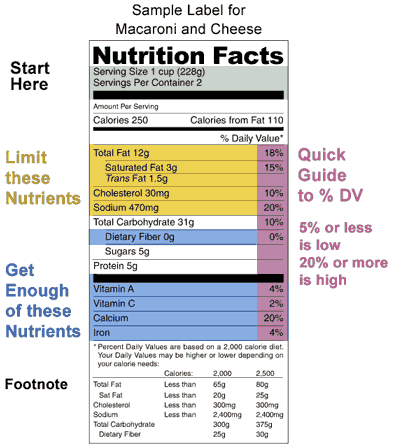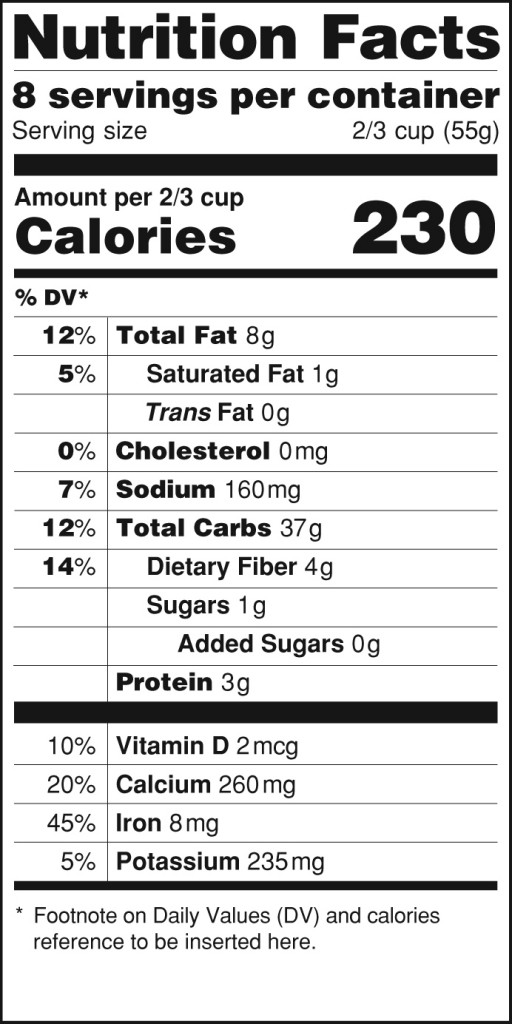Have you ever stared at a food label and wondered what all of those numbers mean?
Here is a quick guide to reading food labels.
1. Start with the serving size.
Manufacturers decide what an appropriate serving size is. However, you always want to start here first. If you eat two servings of a product then all other numbers on the food label must be multiplied by two. Also be sure to check the serving size if you are comparing two similar products. One manufacturer may list the nutrition facts for a standard size (28 grams/ 1 ounce) piece of bread while another lists the nutrition facts for a larger piece of bread (42 grams/ 1.5 ounces).
2. Check the percent Daily Value (%DV).
The %DV is based on a 2,000 calorie diet. So keep in mind that your actual needs may be a little higher or lower. Nevertheless, %DV is a quick guide to the food label. It shows you how much one serving of this product will be allocated to your total daily needs. Consider less than 5% DV “low” and more than 20% DV “high”.
For example, on a 2,000 calorie diet, the Institute of Medicine recommends that up to 65 grams of fat may be consumed. If one serving of this product supplies 5% of your total daily needs for fat then you can eat quite a few servings of it before you hit your fat quota for the day. If it supplies more than 20% of your total daily needs for fat then you may hit your fat quota more easily.
Scan down the %DV on the nutrition facts panel. Any nutrient that exceeds 20% DV should be noted as a “high” source of that nutrient.
In the example label above, one cup of macaroni and cheese is “high” in sodium and calcium. It is “moderate” in fat, saturated fat, cholesterol, and carbohydrates. It is “low” in fiber, vitamin A, vitamin C, and iron.
Trans fats do not have a %DV listed. The American Heart Association has recommended that trans fat intake be limited to no more than 2 grams per day. So technically, one cup of this macaroni and cheese would be very high in trans fat (150% DV if there was one).
3. Eat right
Try to limit the nutrients that are listed in yellow: Total Fat, Saturated Fat, Trans Fat, Cholesterol, and Sodium.
Be sure to eat enough of the nutrients that are listed in blue: Fiber, Vitamin A, Vitamin C, Calcium, and Iron.
4. Scan the ingredients
Ingredients are listed in order of descending weight. So the ingredients that weigh the most are listed first. The ingredients that weigh the least are listed last.
Try to choose products with short ingredient lists and ingredients that you can recognize. Look for vegetables, fruits, whole grains, beans, nuts, seeds, lean sources of protein, and unsaturated fats.
Source: FDA.gov
The Food and Drug Administration is currently revising the Nutrition Facts label. Read more about the progress here.
In the future, it may look something like this:


